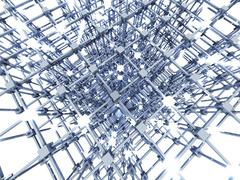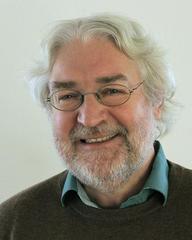Artist´s impression of the lattice hosting quarks and gluons. (Picture: © iStock Photo).
The research project “Hadronic contributions to electroweak observables“ by Karl Jansen from DESY in Zeuthen has been awarded a “John von Neumann Excellence project 2016”, thus given extra computing time on the supercomputer JURECA. The award is offered by the John von Neumann Institute for Computing, a joint venture of the three Helmholtz research centres Forschungszentrum Jülich, DESY and GSI. The project was chosen based on the excellent preparatory work, the outstanding importance and the high quality of the used methods.
Jansen´s project is embbeded in the field of lattice gauge theory performing large scale numerical simulations on high performance supercomputers, in this case JUQUEEN and JURECA at the supercomputer center in Jülich. It investigates the magnetic moment of the muon which deviates from the classical value. Muons are spin-1/2 particles, belong to the particle class of leptons and are very similar to the electron but about 200 times heavier. The deviations of the muon magnetic moment are pure quantum effects and can provide direct evidence for physics beyond the standard model of high energy physics since new, so far undetected particles can be responsible for significant corrections to the classical value.
The muon magnetic moment can be measured very precisely with seven significant digits. Therefore, to find deviations from the standard model, the theoretical prediction needs to be equally accurate. Unfortunately, simulations within lattice gauge theory to compute the muon magnetic moment have been rather imprecise so far, making it seemingly impossible to reach the experimental precision.
However, Jansen has achieved two important steps forward: He and his team developed a new technique to calculate the muon magnetic moment, leading thus to a significant error reduction. In addition, he could perform simulations directly in physical conditions, a step that reduces systematic uncertainties dramatically.
Both achievements led to the fact that the theory error is now comparable to the experimental one. This opens up the very promising path to match the even more reduced error of new, future experiments at FermiLab and J-PARC and thus to possibly discover hints for physics beyond the standard model.
Jansen is already the second DESY scientist to lead a John von Neumann Excellence project in 2016. Only half a year before, a simulation project of Alberto Martinez de la Ossa from DESY´s FLASHForward group was provided with extra time on the NIC supercomputers.









